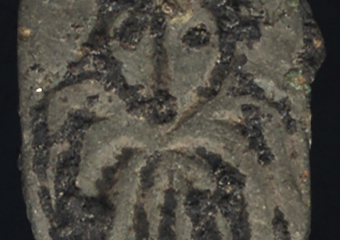Sixth Archaeological Season in the ancient city of Aquae Calidae
Already a month has past since the beginning of the 6th season of intensive research on the key archaeological site of Burgas Municipality [url=http://www.burgasmuseums.bg/index.php?tab=home&lang=en&page=encyc&enc=poi&eid=24]Aquae Calidae[/url] - Terma, located in the district Burgaski mineralni bani.
The beginning of systematic archaeological research was set in 2008 by the deceased Director of the Regional History Museum (RIM) in Burgas - the archaeologist Tsonya Drazheva(1954-2013). Six years after its start, the excavations are concentrated east and south to the bath, built by Sultan Suleiman the Magnificent in the mid 16th century. The archeological research is funded once again by the Municipality of Burgas, which makes it possible to complete the full archaeological survey of the area.
The archaeological research is conducted by the Regional museum of Burgas with a survey team lead by Head of Arch. study Dr. Dimtcho Momtchilov, Deputy. Head Miroslav Klasnakov (RIM Burgas), archeologists: Stefan Bakardzhiev and Yavor Rusev from RIM Yambol, trainees from the Burgas University "Prof. Zlatarov", Shumen University "Bishop Konstantin of Preslav" and Plovdiv University "Paysiy Hilendarsky".
Although the construction of the Turkish bath and the subsequent extensions in the early and mid-20th century have destroyed and reused valuable construction materials (processed stone square) of the ancient bath, the archaeologists dig is currently at the depth of 4.5 to 5.5 - 6.0 m, at which have been found the remains of the first bath, built in the Roman era in the early second century. They are fully in line with the findings from 2012, when the archeologists revealed for the first time a monumental Roman architecture, unseen on the Southern Black Sea coast.
The dig continues in a thick layer of the most significant fire in the public bath from the beginning of the 13th century (1206) preserving the memory of the devastation of the medieval Bulgarian bath caused by the troops of Henry, brother of the Latin Emperor Baldwin, who lead the campaign against the Bulgarian ruler Kaloyan. In these layers the archeologists found numerous fragments of pottery as well as coins from the 11-12 century.
These year's findings already exceeded the expectations of the researcher team. Among the finds are more than 50 coins, most from the middle of the fourth century, anonymous folises from the 11th century and especially from the 12-13 century. Found were many bronze rings, mace, silver pendant from the 11th century with the image of St. George, a gold earring from the Ottoman period, exquisitely decorated with pearls.
The archaeological excavations of the public bath, which existed in Roman, Byzantine and Bulgarian times, as well as the partial restoration of the Turkish bath are part of the ambitious program of Burgas Municipality for the full exposition of this unique for the Bulgarian lands archaeological site.
[widget="photo" name="a137" params="albid=137&rows=1"]


Comments
comments powered by Disqus